Believed to be eaten by people long ago, they invoke thoughts of the ancient Incas. These grains were a staple in their diet. Wonderment and amazement surrounds the Incan culture, similar to that around the anceitn Romans and Greeks. To this day scientists still can't figure out how Manchu Picchu was formed, or how the rocks were moved there since that area of Peru doesn't contain any massive rocks. You'll notice that the names of these grains aren't Spanish. They're Quechua. One of the languages spoken by the indigenous people of Peru.
Your local health food store will probably have them, if not you can always order them off iHerb (and get up to $10 off your first order by using code: LNQ216).
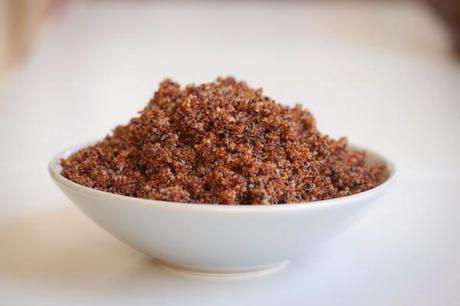
Source: Allyson Kramer
KañiwaSimilar to quinoa, this seed is high in protein and amino acids. It's also a great source of iron and is gluten-free. Make sure you rinse kañiwa thoroughly before cooking. The grains are covered with a bitter coating that must be removed before cooking. Some people say that it's better to lightly toast it and then cover it with water. You'll want to use 1 part kañiwa to 2 parts water and drain thoroughly.
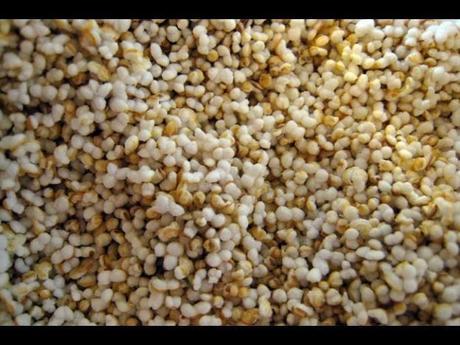
Source: Peru this Week
Kiwicha
Also a gluten-free seed, kiwicha is red, gold, and purple. It's high in fiber and protein and has a number of essential minerals. Sometimes referred to as the mini-quinoa, it is also know as amaranth. During the Day of the Dead celebrations, kiwicha is popped and sugar is added to make a alegria, a candy.
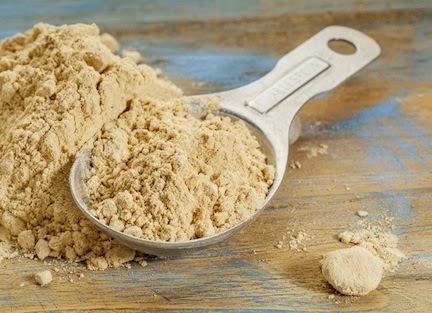
Source: Veg Kitchen
Maca
Commonly known as Peruvian ginseng, this root has commonly been used as a supplement. You can add it to cold dishes or drinks, but be careful about adding it to anything hot as the heat can cause it to lose its health benefits.
Quinoa
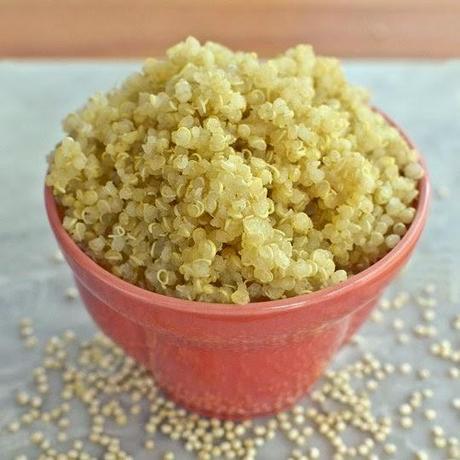
Source: The Kitchn
Technically not a grain, but a seed that is high in protein and doesn't contain gluten. It's easy to cook. Rinse thoroughly! The seeds have a coating on them and if you don't rinse it off the quinoa will taste very bitter. You add 1 part quinoa to 2 parts of water and boil. Once the water reaches a boil, cover the pot, and turn the heat down low. Wait until the quinoa is soft. It should take about 15 minutes. Drain and put back into the pot. This will help it dry out more and make sure the quinoa is fluggy and not soggy. Wait about 15 minutes and serve.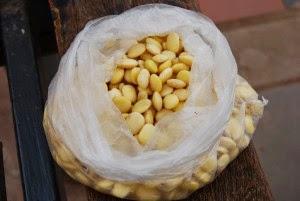
Source: Cuzco Eats
TarwiBetter than soybeans, this legume is high in protein and amino acids. Sometimes called chocho, it takes longer to make than quinoa, kiwicha, or kañiwa. You'll have to soak it in water for about a day before using. You can eat it whole or mash it similar to potatoes.
Conclusion
Here are some more posts that might interest you.
- Peruvian desserts
- Peruvian drinks
- Peruvian food and drink
- Peruvian fruits
- Pisco Sour
Remember to learn Spanish if you're going to go to Peru. It'll help you assimilate to the culture and you'll be able to communicate easier. If you're looking to learn Spanish, Fluenz Spanish, Rosetta Stone, and Synergy Spanish.
